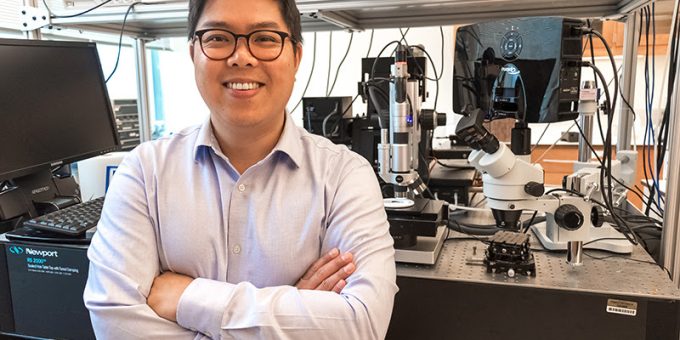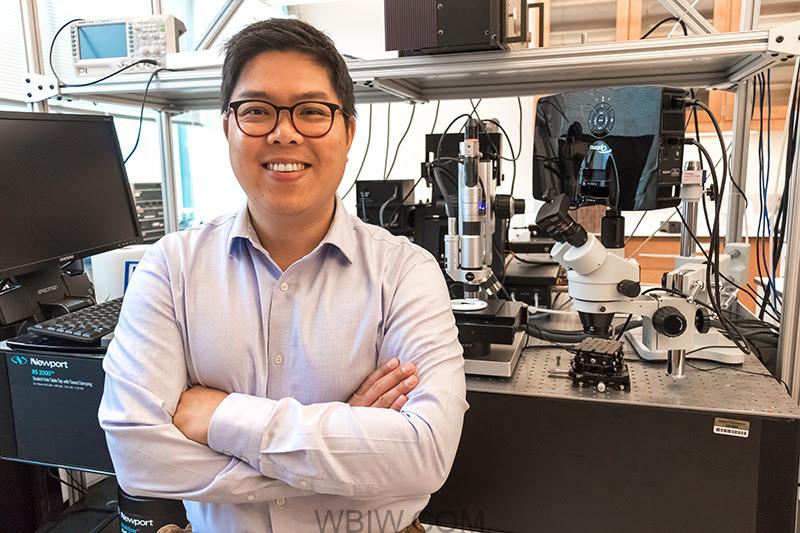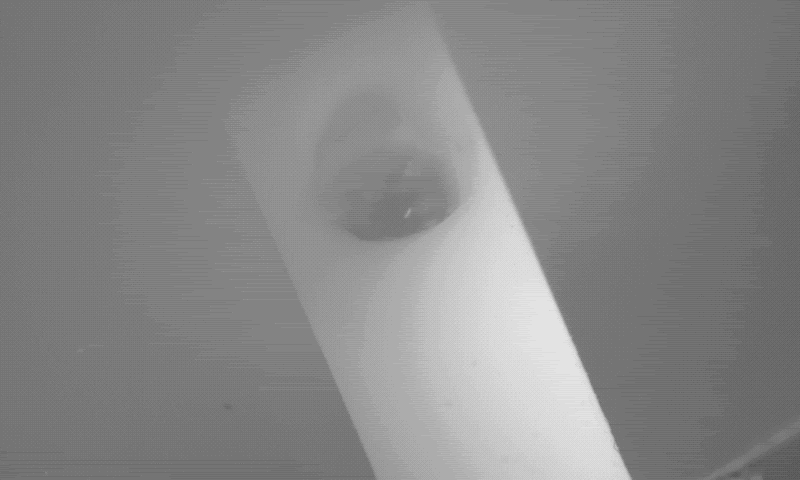
WEST LAFAYETTE – A new treatment for strokes caused by bleeding in the brain that uses a magnetically controlled microrobot-enabled self-clearing catheter has been shown to be 86% effective in animal models, according to a paper published in Nature Communications.

Hyowon “Hugh” Lee, a Purdue University associate professor from the Weldon School of Biomedical Engineering, created the magnetically controlled microdevice that removes blood accumulating in the brain during a stroke. The innovation was tested on porcine models of hemorrhage in collaboration with neurosurgeons Dr. Timothy Bentley from Purdue’s College of Veterinary Medicine and Dr. Albert Lee from Goodman Campbell Brain and Spine in Carmel, Indiana.

The full range of motion of a magnetically controlled microdevice was invented by Purdue University associate professor Hyowon “Hugh” Lee to remove blood accumulating in the brain during a stroke. (Video provided by Hyowon “Hugh” Lee)
The microrobots successfully removed the blood in six of the seven animals in the treatment animal model.
“This innovation is a real advance in the care of strokes, which are notoriously difficult to treat,” Hugh Lee said.
The current gold standard to treat strokes is a blood thinner called tissue plasminogen activator, which cannot be used for some hemorrhagic strokes.
“Patients with brain hemorrhages have a mortality rate of up to 50%,” Albert Lee said. “Currently there is no great therapeutic solution for intraventricular hemorrhage. The only other option is blood clot-dissolving drugs that have undesirable risks.”
Hugh Lee’s innovation, which was developed with a former graduate student, Qi Yang, can be remotely activated using externally applied magnetic fields.
“There is no need for an implanted power source or complicated integrated circuit,” Hugh Lee said. “As you change the direction of the magnetic field, the microdevice moves like a compass needle with a magnet nearby. They can be part of an implantable shunt system or a part of extraventricular drainage systems.”

A magnetically controlled microdevice invented by Purdue University associate professor Hyowon “Hugh” Lee removes a clot from the brain.
Hugh Lee disclosed the innovation to the Purdue Research Foundation Office of Technology Commercialization, which has filed for a patent on the intellectual property. The next step to further develop the device is to receive approval from the U.S. Food and Drug Administration for a first-in-human study.
Lee’s collaborative research was funded by grants from the Indiana Clinical and Translational Sciences Institute and the National Institutes of Health.
About Purdue University
Purdue University is a top public research institution developing practical solutions to today’s toughest challenges. Ranked in each of the last four years as one of the 10 Most Innovative universities in the United States by U.S. News & World Report, Purdue delivers world-changing research and out-of-this-world discovery. Committed to hands-on and online, real-world learning, Purdue offers a transformative education to all. Committed to affordability and accessibility, Purdue has frozen tuition and most fees at 2012-13 levels, enabling more students than ever to graduate debt-free. See how Purdue never stops in the persistent pursuit of the next giant leap at https://stories.purdue.edu.
About Purdue Research Foundation Office of Technology Commercialization
The Purdue Research Foundation Office of Technology Commercialization operates one of the most comprehensive technology transfer programs among leading research universities in the U.S. Services provided by this office support the economic development initiatives of Purdue University and benefit the university’s academic activities through commercializing, licensing and protecting Purdue intellectual property. The office is housed in the Convergence Center for Innovation and Collaboration in Discovery Park District at Purdue, adjacent to the Purdue campus. In fiscal year 2021, the office reported 159 deals finalized with 236 technologies signed, 394 disclosures received and 187 issued U.S. patents. The office is managed by the Purdue Research Foundation, which received the 2019 Innovation and Economic Prosperity Universities Award for Place from the Association of Public and Land-grant Universities. In 2020, IPWatchdog Institute ranked Purdue third nationally in startup creation and in the top 20 for patents. The Purdue Research Foundation is a private, nonprofit foundation created to advance the mission of Purdue University. Contact otcip@prf.org for more information.
Information: Steve Martin, sgmartin@prf.org
Sources: Hyowon “Hugh” Lee, hwlee@purdue.edu, Albert Lee



